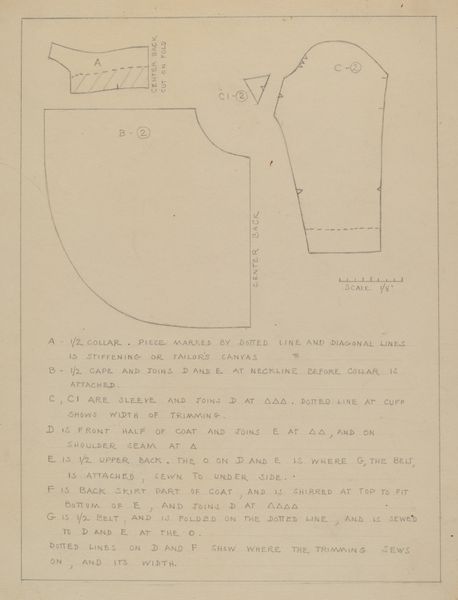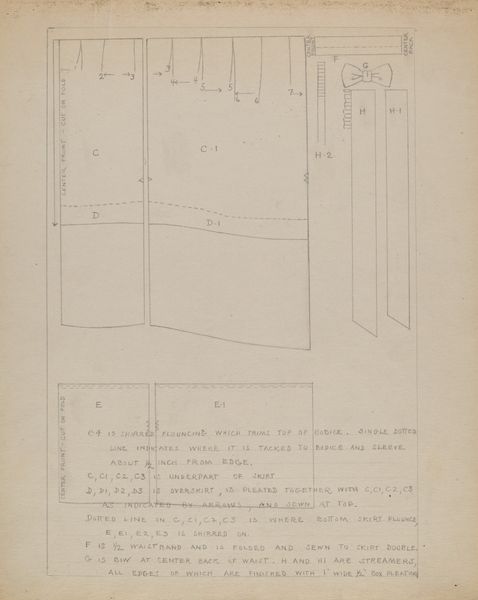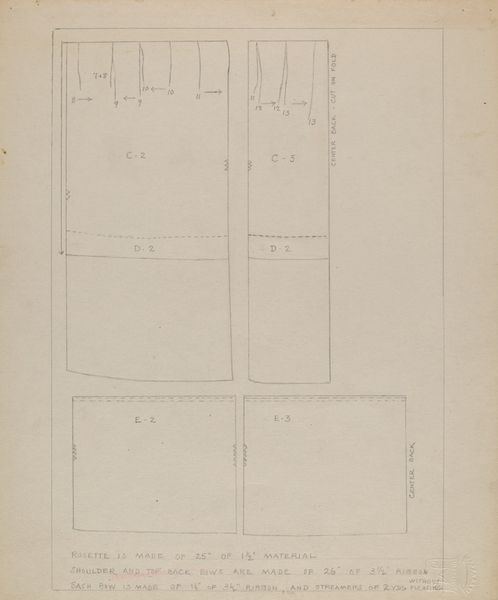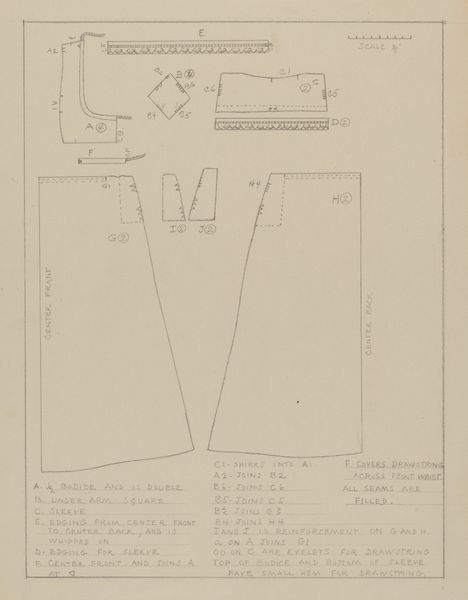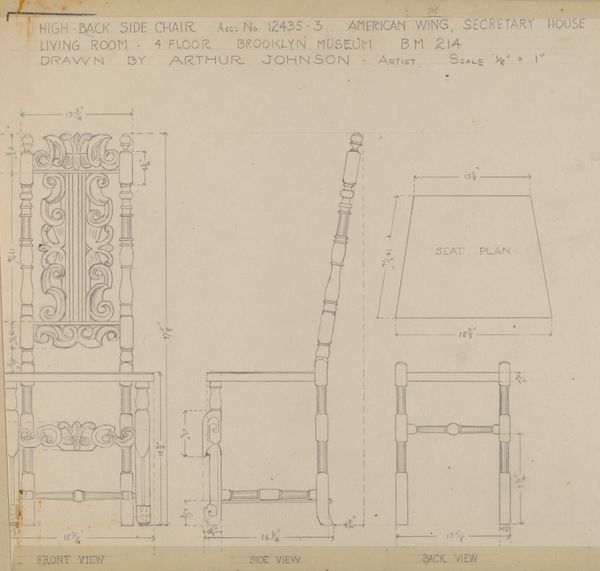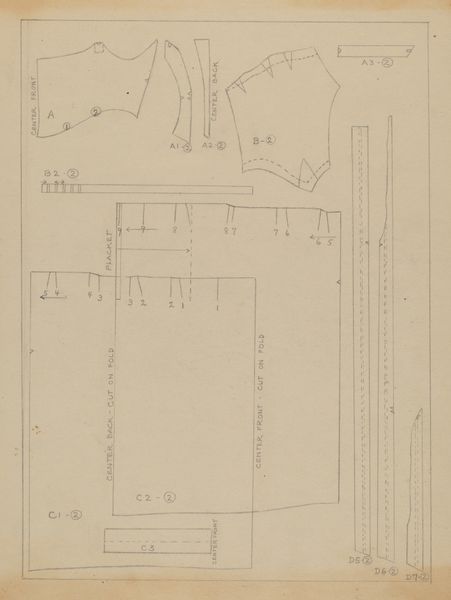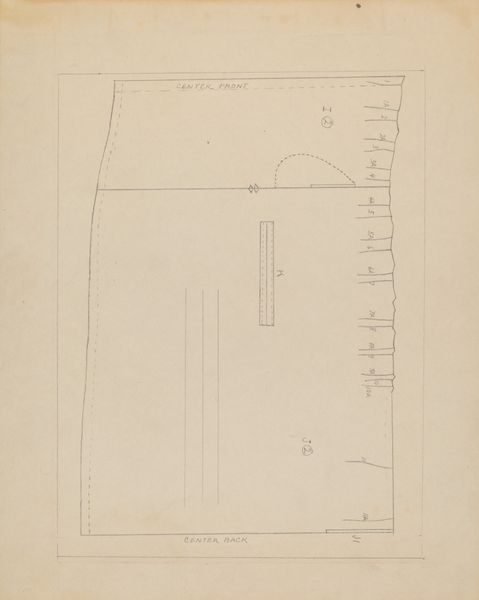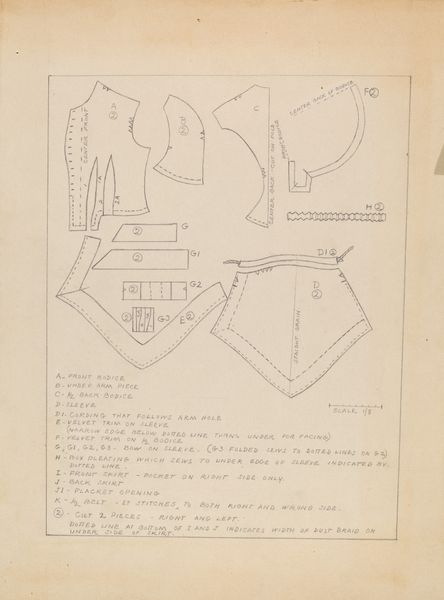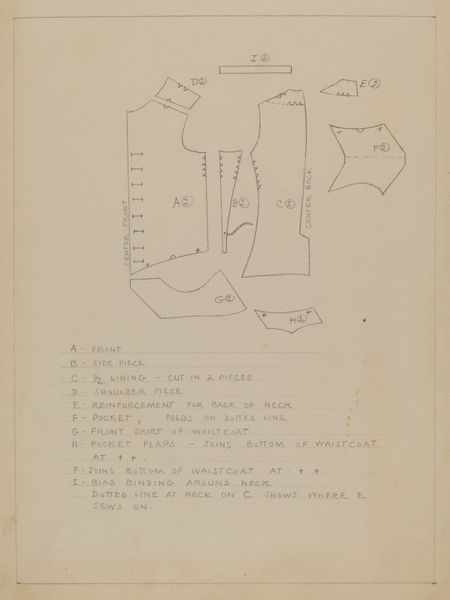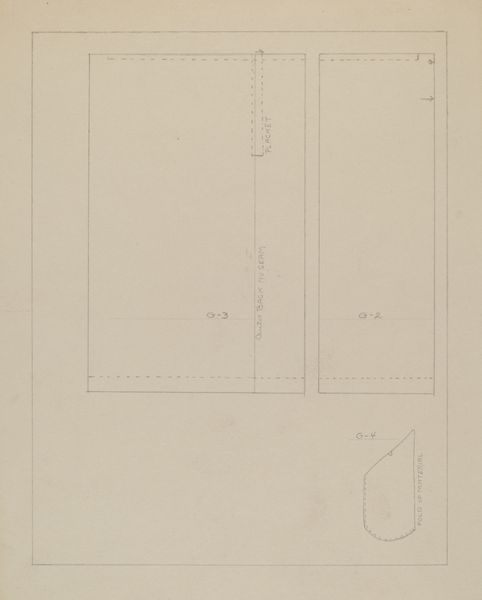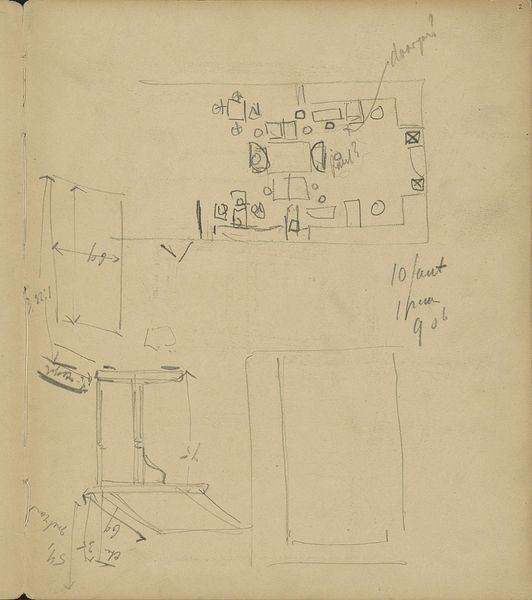
drawing, paper
#
drawing
#
aged paper
#
toned paper
#
hand written
#
old engraving style
#
hand drawn type
#
paper
#
tea stained
#
personal sketchbook
#
idea generation sketch
#
hand-written
#
handwritten font
Dimensions: overall: 27.9 x 21.6 cm (11 x 8 1/2 in.)
Copyright: National Gallery of Art: CC0 1.0
Editor: This is "Pattern for Man's Shirt," a drawing from around 1936 by Rosalia Lane. It’s on paper, and the aged quality makes it feel like a historical document as much as a design. What do you see in this piece beyond the obvious practical function? Curator: I see a powerful intersection of gender, labor, and artistic expression. While ostensibly a utilitarian garment pattern, it embodies the often-invisible work of women in the domestic sphere, specifically the creation of clothing. How might we interpret this through a feminist lens, recognizing the historical devaluation of such skills? Editor: That’s interesting. I hadn’t considered the gendered aspect so explicitly. So, this pattern is not just instructions; it’s a record of lived experience, perhaps a quiet act of resistance against the constraints placed upon women's creativity. Is that accurate? Curator: Precisely. Think about the handwritten notes – the personal touch in what could have been a purely technical drawing. This elevates it. What connections can we draw to contemporary discussions about craft, artistic labor, and the reclaiming of traditionally feminized practices? Editor: It feels relevant to discussions around valuing craft and challenging the hierarchy between "high art" and domestic skills. Almost like an unsung monument. Curator: Exactly. And doesn’t it make you question the broader social and economic conditions of the time that relegated such skill and ingenuity to the domestic sphere? What stories does the stained and aged paper tell us about resourcefulness and endurance? Editor: It definitely reframes my perception. It's more than just a pattern; it's a window into a world where creation and necessity were deeply intertwined. Thank you. Curator: And thank you. By considering its historical and social context, this pattern transforms into a potent symbol of everyday creativity and resilience, encouraging us to re-evaluate what we consider to be "art."
Comments
No comments
Be the first to comment and join the conversation on the ultimate creative platform.
